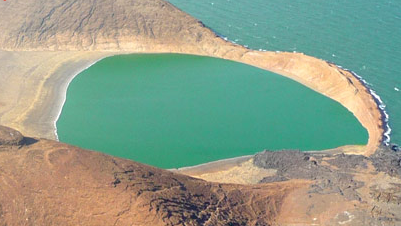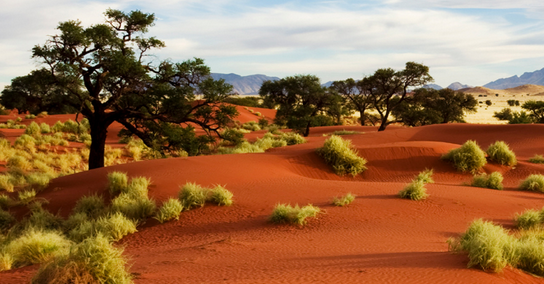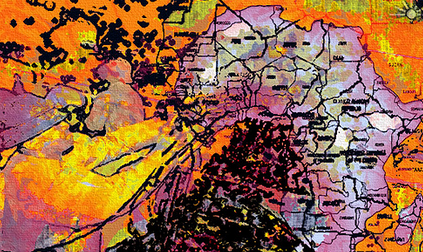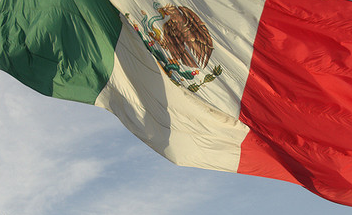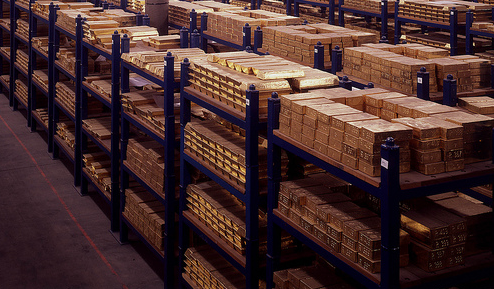Nyheter
Kenya getting ready for development of resources
▬ TAKING THE NECESSARY STEPS TO STIMULATE COMPANIES AND INVESTORS TO JOIN THE SEARCH ▬
In the beginning of this year, in the January issue, I elaborated on the resource developments in the East Africa region with as subtitle “A VAST POTENTIAL TO BE TAPPED”.
I named East Africa as one of the most recent and in my opinion very interesting parts of Africa that is being discovered as an emerging area for exploration and mining.
As I have been following the progress of several mining and exploration companies in this region, I was extremely interested in what I would hear during my recent visit to Nairobi, Kenya, where the second Mining Business & Investment (MBI) Conference 2012 was being held. I remember vividly that I visited the Ministry of Mines in Kenya some 5 years ago. It was one of those visits where opening the front door only resulted in the dust coming off the files that had not been touched for the last few years. And the several talks I had, did not lead anywhere, I just had the feeling that they were not in the least interested to discuss resource affairs. Despite the widely spread presence of small scale mining, the early development of gold exploration in the Nyanza area and the efforts of Tiomin to get their ambitious mineral sands project north of Mombasa off the ground, it was as if the officers of the Mining Ministry had no belief at all in their potential of ever becoming a country with a viable resource industry. Well, to my pleasure I can now say that things have changed and will shape up over the next few months and years!
At the MBI conference, I experienced the new vibrant attitude and energetic plans and programs that the Ministry for Environment and Natural Resources and the Kenya Chamber of Mines have been developing to provide an up-to-date platform and infrastructure for development of Kenya’s mineral resources over the next few years.
As said, compared with what I had experienced five years ago, it was a distinct difference and a very necessary and welcome one too! If you consider that the industry still has to abide by the rules and regulations of a Mining Law that dates from 1940 (!), that there is no cadastral survey of mineral lands, let alone a geological survey of the country, you can imagine that there still needs to be done a lot to allow effective exploration to develop. But…..a good start has been made. Mr. Ali Mohammed, Permanent Secretary of the Ministry, elaborated on the new Mining Bill that has been prepared and is now in its 5th Draft version. Mr. Mohammed painted a clear picture of how the Ministry sees ‘The Way Forward for Mining’, a vision that was subsequently supported and expanded more in detail in the presentation ‘East Africa Mining Outlook and Opportunities’ of Mr. Moses Masibo, the Commissioner of Mines. It all sounded pretty dedicated and determined and after ploughing through the 34 pages of the Mining Bill Draft, I must say it looks like a good piece of work and seems like a modern framework that could become workable.
One of the significant challenges is that the Policy seeks to propose the establishment of what is to be known as the Natural Resource Capital Centre (NRCC) where all kinds of information about the inventory of mineral resources, actual and potential, will become available to the industry and the public. The Ministry recognizes the need of having this information available, such as the mentioned cadastral and geological surveys and intends to commence working towards ‘specific plans for executing the necessary policy actions’, including establishing an elaborate, reliable and coherent national database, enacting the Natural Resources Act, setting criteria for the equitably sharing of benefits, developing civic education, public awareness and participation of communities developing infrastructure, expertise and result-based initiatives for innovation, product discovery and development, establishing an initial revolving fund to support flagship projects and growth of small and medium enterprises, building commercialization by imparting of entrepreneurial skills, providing financial and fiscal incentives and investing in market development, liaising with lead agencies on matters of regulation, including research and connected activities to promote the resource-process-product matrix, establishing a Natural Resources Regulatory Board,
- anchoring the policy within the framework of the National Land Commission through the creation of the Directorate of Natural Resources,
- establishing a Natural Resources Training Institute,
- allocating a percentage of revenue from natural resources to capacity development and research,
- encouraging and enhancing appropriate technology transfer in the exploitation of natural resources and liaising with both local and foreign entities to invest,
- implementing the National Land Use Guidelines in collaboration with the National Land Commission,
- making provision for Alternative Dispute Resolution as provided for under the Constitution,
- ensuring access to environmental justice through partnerships and collaboration with established state agencies and mechanism,
- establishing and where already in place, implementing fiscal, institutional, policy, legislative and regulatory reforms.
As I mentioned earlier, this could be a workable document. However, it remains to be seen how the implementation of this Mining Bill and the eventual stipulations with other government bodies will be structured. The danger is that a bureaucratic dragon will be created which makes the actual working of exploration and mining companies difficult and slow. I just hope that the politicians and legislators are not going to interfere too much by making all kinds of undesired and unworkable changes……
In this respect, I was pleased to hear what COMESA, the Common Market for Eastern and Southern Africa, had to say about this for the significant part of Africa it represents through its member states. Although the basic presentation was mainly dealing with the protection of small scale mining, the Secretary-General, His Excellency Sindiso Ngwenya, gave a strong, humorous and common-sense speech in which he stressed the desirability for sharing research findings, harmonizing various mining policies and codes, common policies for extraction of mineral resources, establishing a Think Tank to study trends in mining and advise the regions, adaption of equity participation models in mining, institutionalizing a harmonized international engagement in the mining industry and work towards the development of a comprehensive and effective policy to regulate international business practices in the mining sector.
After the conference, I had an extensive meeting with Ms. Monica Gichuhi, Chief Executive Officer, Kenya Chamber of Mines. Above all, it was good to hear that also next year, there will be a MBI Conference.
But certainly not less important, it was very encouraging to hear Monica talk about the new spirit that she experienced in discussing resources matters with the government and some of the government bodies that are instrumental in putting the new laws and regulations together. Kenya seems dedicated to move forward with the implementation of the new Mining Bill and the subsequent required legislation.
And, as said earlier in this editorial, this is not only desirably but of the utmost importance. If you want to attract international mining and exploration companies on one side and international investors, both institutional and individual, to come and join the search for Kenya’s resources, you need to provide a healthy, sensible and comfortable legal infrastructure, clear and understandable tax laws and, very important to make feel all parties at ease and confident, a fair and transparent system to share the proceeds of all mining efforts to the benefit of all parties.
Other ingredients of great significance in attracting new companies to the Kenyan resources development scene, are the experiences and the rates of success that the currently working public companies achieve and report from the fields.
In my January 2012 report on the mining and exploration developments in the East Africa region in general, I mainly restricted myself to some of the companies that are active in the gold sector although I did include the ambitious mineral sands project for the production of rutile and ilmenite. Of course, there are other minerals of significance and certainly so in Kenya, such as fluorite, a mineral that is used as a flux in iron smelting to decrease the viscosity of slags at a given temperature and has ornamental and lapidary uses as a stone, niobium which is used in the steel manufacturing, soda ash (sodium carbonate) with an instrumental use in glass production and a variety of uses in manufacturing, industry and around the house, coal which belongs to the energy sector, iron ore, manganese as a metal with important industrial metal alloy uses particularly in stainless steels, diatomite which is a near pure sedimentary deposit consisting almost entirely of silica, vermiculite with too many uses to mention them all but I mention the insulation, soil conditioner, fireproof and plaster qualities, and natural carbon dioxide of which I mention its significant interest as a greenhouse gas against global warming and climate change situations.
Last but absolutely not least is the presence in Kenya of a variety of gemstones, found and being mined mainly by small scale mining projects in various parts of the country. As coloured stones have been the subject of one of my long-time hobbies, I have a vivid interest in this sector. It requires too much specialism to be active in that field and be included in the general subject of mining and exploration and certainly of mining investment. I can tell you, I have seen real fabulous stones with distinct qualities and value.
Back to what I said above: the experiences and rates of success that are achieved by companies that are currently actively exploring and in some cases even mining in Kenya could play a main role in attracting new companies to become a part of the increasing discovery and recognition of its resources as a prospective and viable industry. Here is a review of the public companies that are currently working on mineral projects in Kenya:
CURRENT RESOURCE PROJECTS IN PROGRESS
GOLDPLAT plc
AIM:GDP, price Oct. 24: GBp14.75, market cap £24.7m
Goldplat was the first company to obtain a mining license in Kenya since independence in 1963 for its Kilimapesa Gold project, located in the historically productive Migori Belt in western Kenya. The Migori area is the northern continuation of the Lake Victoria goldfields in Tanzania which hosts many major gold deposits and several major producing mines, including African Barrick’s multi-million ounce North Mara mine, situated about 40km southwest of the Kilimapesa project. Goldplat poured its first gold in January 2012 from a JORC-compliant resource of 8.3 million tonnes at 2.44g/t for 649,804 ounces of gold. For this year, production was estimated to reach the scheduled 10,000 ounces per year. However, due to delays in the completion of the recovery plant, actual production will be less than foreseen. It is now foreseen that the originally planned 10,000oz/year production will be attained over the next two years. Goldplat has other gold recovery projects going in Ghana and South Africa and is establishing a new gold recovery processing unit in Burkina Faso. Over the year ended 30 June 2012, Goldplat reported a 52% increase in operating profits and proposed a maiden dividend.
Base Titanium Ltd, subsidiary of BASE RESOURCES LTD.
ASX:BSE, price Oct. 24: A$0.41, market cap A$226.1m
Base Titanium is developing the world-class Kwale Mineral Sands project in the Coastal area, 50km south of Mombasa. The US$550 million Kwale project is a flagship of Kenya’s mineral industry that is being realized with the full support from the Government. All material project approvals, permits and licenses for development, a full definitive feasibility study and funding are in place. On top of the US$170 million credit facility, Base completed an A$140 million equity placement in September of this year with an A$40 million retail equity issue underway now. Completion and commissioning of the project is scheduled for Q3 2013 with the first shipment slated for Q4 2013. Ilmenite, rutile and zircon are vital ingredients for the paint industry and are widely expected to emerge into a significant supply shortfall forecast in the medium term future. Base Resources also holds an option to acquire three more titanium sands projects north of Mombasa and gold, iron and uranium targets in Australia.
RED ROCK RESOURCES Plc
AIM:RRR, price Oct 24: GBp1.52, market cap £13.4m
The principal operation focus of Red Rock Resources is on gold exploration in Kenya, taking the Migori Gold project through optimisation studies ahead of a Bankable Feasibility Study. The project is incorporated in the Mid Migori Mining Company Ltd. which is 15% owned by Red Rock Resources with a 60% farm-in agreement from Kansai Mining Corporation (TSXV:KMC) of which Red Rock controls 37.96%. The Migori project includes several areas of focus. The closest to production is the Macalder Tailings project. A Scoping Study was completed earlier this year which confirmed economic potential. A JORC measured resource stands at 1.286Mt at 1.65g/t gold and 33.5g/t silver for a total of 68,000 ounces of gold. Currently, the company is in the process of evaluation some options for processing and come to an average annual production of 10,500 ounces of gold over four years. Another prospective production potential is the Mikei Gold project where an NI43-101 indicated resource of 1.2 million ounces of gold has been established.
Red Rock is also exploring in northern Canada and in southern West Greenland. In addition, it owns investments in Jupiter Mines (ASX:JMS), Ascot Mining Plc (AIM Plus) and Resource Star Ltd (ASX:RSL).
PACIFIC WILDCAT RESOURCES CORP.
TSX:PAW, price Oct 24: C$0.085, market cap C$22.3 million
Pacific Wildcat owns a 70% interest in CORTEC MINING KENYA LTD., a private Kenya company which is mainly focusing on the 631km² Mrima Hill project, situated appr. 65km south of Mombasa, that includes a number of exciting targets for specialty metal mineralization, such as niobium and rare earth metals. The presence of these resources was already outlined in exploration programs of the Kenyan Mines Department and Anglo American in the early 1950s and subsequently again encountered by Pechiney in 1968-1971; since they were looking for europium, they had no interest whatsoever in niobium and rare earth metals. Management believes the project has the potential to become a world class niobium deposit. Cortec intends to convert its Special Prospecting License to a Mining Lease and commence mining the high grade niobium zone which is approximately between 1.5% and 3% of the Mrima Hill area. The majority of the ore body is located at shallow depths and based on the current model, an open cut pit would affect only 2km², less than 0.25% of the land area. This will lead to the establishment of production plants to process the resources in the Kwale district and possibly in the Mombasa area.
Cortec is also exploring the Mkangombe project in the Kwale district, prospective for copper-lead-zinc mineralization and two other projects in the Samburu district of the Rift Valley province, prospective for nickel, copper, PGE and uranium mineralization.
AFRICAN QUEEN MINES LTD.
TSXV:A, price Oct.24 C$0.20, market cap C$14.1 million
African Queen has three projects in Kenya. The main focus is on the 97km² Rongo Gold Fields project, situated in the Kanango gold mining area of the Migori District where the company may earn up to an 85% interest in the project from Abba Mining Company. The ongoing trenching and core drilling program on the Odundu property has encountered broad zones of gold mineralization. The 370km² Ugunja Gold project in which African Queen may earn up to 85% in the project from Kenya Discovery Ltd., is situated in the Busia, Siaya and Kakamega areas, north of Lake Victoria. In the recent months, exploration has identified several drill targets and revealed visible gold near surface and a structure that could host commercial deposits. Interesting is that African Barrick has become Uganja’s neighbour through the adjacent Aviva Siaya property. The third project is the 850km² and 100% interest in the Karameri Metals project, situated 240km north of Kisumu near the border with Uganda. African Queen is also actively exploring in the Ashanti Gold Belt in Ghana, Mozambique and South Africa.
STOCKPORT EXPLORATION CORP.
TSX:SPT, price Oct. 24 C$0.11, market cap C$8.2 million
Stockport Exploration (the former Linear Metals) has set its strategy to focus on properties that have a major gold discovery potential of over 1 million ounces, high potential geology, proven high-grade intercepts, limited modern exploration and large scale with possible multiple discoveries. The 1360km² Nyanza and 660km² Sotik projects fit that description. In the Nyanza project, Stockport has the right to earn a 70-95% interest from East African Pure Gold and B&M Mining, the Sotik project is 100% owned. The 2011-2012 drill results returned high-grade interceptions which are consistent with drill results from 2003-2004. All current intercepts run between 25 and 60m depths and confirmed a zone of 140m in length, open in strike and in depth in all directions. Stockport will continue its exploration with sampling and mapping of vein structures and artisanal workings, further geological mapping and sampling, interpretation of Induced Polarization data to determine expansion of the target area, identify highest priority drill targets and diamond or reverse circulation drilling along the 2.5km trend. Stockport is also active with two projects in Canada and a high-grade silver project in Mexico.
AVIVA CORPORATION LTD.
ASX:AVA, BSE:AVIVA, price Oct 24 A$0.076, market cap A$12.6 million
AFRICAN BARRICK GOLD PLC
LSE, DSE:ABG, price Oct 24 GBp 479.60, market cap £1994.66 million
Aviva Corporation has been active in Kenya since it entered into a joint venture with AfriOre International, a wholly-owned subsidiary of Lonmin Plc, the world’s largest platinum producer, in 2010. Aviva has the right to earn an interest of up to 75% by spending US$3 million in three years and completing a Pre-Feasibility Study demonstrating a pre-tax NPV of US$50 million. The West Kenya project comprises 2,788km² of the Ndori Greenstone Belt that stretches up from the Tanzanian border along the Lake Victoria. This area is seen as the extension of the prominent gold region in Tanzania where AngloGold Ashanti and Barrick Gold developed their world-class gold producing mines. The exploration program conducted by Aviva since 2010 has delivered encouraging early results and confirmed historic exploration data and initial drilling has intercepted massive sulphide mineralization with high-grade intercepts of copper, zinc, silver and gold. It is estimated that the more than 200 recorded artisanal gold prospects in the area have produced over 200,000 ounces so far. On the West Kenya project, several gold prospects have been identified and one advanced base metals prospect, the Bumbo Base Metals project. It is most probable that African Barrick will direct its first challenge to produce the Pre-Feasibility Study at the due time in 2013.
As is so often the case, also in this review the best was saved for the last. For the simple reason that recent developments have made the completion of the agreement of sale and purchase between Aviva Corporation and African Barrick Gold, announced on July 23, in relation Aviva Mining Kenya Limited possible in the last few days. This transaction, replacing Aviva Mining Kenya by African Barrick in the joint-venture with Lonmin Plc, represents the entrance of mining giant African Barrick Gold into the resource scene of Kenya. Without any exaggeration, this may be called a real break-through in the history and future of what its natural resources could mean for the country and its mining and exploration industry. Until now, it was justified to say that Kenya was largely under-explored, if not un-explored. This is bound to change! The fact that African Barrick has come to the decision to acquire Aviva, for the price of A$20 million and an additional A$10 million if a NI43-101 compliant indicated resource of 3 million ounces or more is declared over the project areas, may be seen as a recognition of the potential that Kenya is likely to hold and offer. It furthermore may be seen as a new beginning for Kenya’s resource industry. I would not be surprised that this step made by African Barrick will lead to other major companies coming into the search for Kenya’s natural resources too. A development that I wholeheartedly endorse and enjoy, it will be to the benefit of all parties involved.
As I memorized in the January 2012 issue on the potential of the East Africa region in general, Kenya has a special place in my heart since I spent a lot of time in that country during the last few years. I have been a believer in the mineral potential of Kenya for a long time and I can only be very content that the things that needed to be done since long, are finally progressing. I am quite positive that we will see a lot of developments in the exploration and mining sector in Kenya and I am confident that the involvement of African Barrick Gold will become one of the major catalysts for further expansion of the resource industry and activities in the country.
At the recent MBI Conference, I have sensed the dedication of the Kenya Government, the Commissioner of Mines and the Chamber of Mines to make the proposed legislative changes work and create the infrastructure and environment that is necessary to develop a flourishing resource industry. Those conditions will be vital to create an environment in which more mining and exploration companies of substance and international institutional and private investors will be tempted to join the new era that Kenya is facing.
I would like to finish this report, which was a pleasure to write, with reiterating the conclusion of my recent presentation at the MBI conference. I said it about East Africa in general, but it is true for Kenya in particular:
VAST POTENTIAL TO BE TAPPED
TO THE BENEFIT OF ALL PARTIES
CHALLENGING TIMES
INTERESTING DEVELOPMENTS
THE BEST HAS YET TO COME…
Henk J. Krasenberg
[hr]
European Gold Centre
European Gold Centre analyzes and comments on gold, other metals & minerals and international mining and exploration companies in perspective to the rapidly changing world of economics, finance and investments. Through its publications, The Centre informs international investors, both institutional and private, primarily in Europe but also worldwide, who have an interest in natural resources and investing in resource companies.
The Centre also provides assistance to international mining and exploration companies in building and expanding their European investor following and shareholdership.
Henk J. Krasenberg
After my professional career in security analysis, investment advisory, porfolio management and investment banking, I made the decision to concentrate on and specialize in the world of metals, minerals and mining finance. From 1983 to 1992, I have been writing and consulting about gold, other metals and minerals and resource companies.
The depressed metal markets of the early 1990’s led me to a temporary shift. I pursued one of my other hobbies and started an art gallery in contemporary abstracts, awaiting a new cycle in metals and mining. That started to come in the early 2000’s and I returned to metals and mining in 2002 with the European Gold Centre.
With my GOLDVIEW reports, I have built an extensive institutional investor following in Europe and more of a private investor following in the rest of the world. In 2007, I introduced my MINING IN AFRICA publication, to be followed by MINING IN EUROPE in 2010 and MINING IN MEXICO in 2012.
For more information: www.europeangoldcentre.com
Nyheter
Gruvbolaget Boliden överträffade analytikernas förväntningar

Gruvbolaget Boliden överträffade analytikernas förväntningar med bred marginal när man presenterade resultatet för det tredje kvartalet. Mikael Staffas, vd för Boliden, kommenterar kvartalet och hur han ser på råvarumarknaden och bolagets olika gruvprojekt.
Nyheter
Australien och USA investerar 8,5 miljarder USD för försörjningskedja av kritiska mineraler

USA:s president Donald Trump och Australiens premiärminister Anthony Albanese undertecknade på måndagen ett avtal som ska tillföra miljarder dollar till projekt inom kritiska mineraler.
Länderna kommer tillsammans att bidra med 1-3 miljarder dollar till projekten under de kommande sex månaderna. Den totala projektportföljen är värd 8,5 miljarder dollar, enligt regeringarna.
Galliumraffinaderi med kapacitet för 5x USA:s efterfrågan
Som en del av avtalet kommer det amerikanska försvarsdepartementet även att investera i ett galliumraffinaderi i västra Australien med en kapacitet på 100 ton per år. För närvarande importerar USA omkring 21 ton gallium, vilket motsvarar hela den inhemska konsumtionen, enligt den amerikanska geologiska myndigheten.
Initiativet kommer samtidigt som Kina har infört exportrestriktioner på vissa mineraler, däribland sällsynta jordartsmetaller, som är avgörande för tillverkningen av elektronik och elmotorer. Gallium används till exempel i mikrovågskretsar samt blå och violetta lysdioder (LED), vilka kan användas för att skapa kraftfulla lasrar.
Nyheter
Vad guldets uppgång egentligen betyder för världen

Guldpriset har nyligen nått rekordnivåer, över 4 000 dollar per uns. Denna uppgång är inte bara ett resultat av spekulation, utan speglar djupare förändringar i den globala ekonomin. Bloomberg analyserar hur detta hänger samman med minskad tillit till dollarn, geopolitisk oro och förändrade investeringsmönster.
Guldets roll som säker tillgång har stärkts i takt med att förtroendet för den amerikanska centralbanken minskat. Osäkerhet kring Federal Reserves oberoende, inflationens utveckling och USA:s ekonomiska stabilitet har fått investerare att söka alternativ till fiatvalutor. Donald Trumps handelskrig har också bidragit till att underminera dollarns status som global reservvaluta.
Samtidigt ökar den geopolitiska spänningen, särskilt mellan USA och Kina. Kapitalflykt från Kina, driven av oro för övertryckta valutor och instabilitet i det finansiella systemet, har lett till ökad efterfrågan på guld. Även kryptovalutor som bitcoin stiger i värde, vilket tyder på ett bredare skifte mot hårda tillgångar.
Bloomberg lyfter fram att derivatmarknaden för guld visar tecken på spekulativ överhettning. Positioneringsdata och avvikelser i terminskurvor tyder på att investerare roterar bort från aktier och obligationer till guld. ETF-flöden och CFTC-statistik bekräftar denna trend.
En annan aspekt är att de superrika nu köper upp alla tillgångsslag – aktier, fastigheter, statsobligationer och guld – vilket bryter mot traditionella investeringslogiker där vissa tillgångar fungerar som motvikt till andra. Detta tyder på att marknaden är ur balans och att kapitalfördelningen är skev.
Sammanfattningsvis är guldets prisrally ett tecken på en värld i ekonomisk omkalibrering. Det signalerar misstro mot fiatvalutor, oro för geopolitisk instabilitet och ett skifte i hur investerare ser på risk och trygghet.
-

 Nyheter3 veckor sedan
Nyheter3 veckor sedanGoldman Sachs höjer prognosen för guld, tror priset når 4900 USD
-

 Nyheter4 veckor sedan
Nyheter4 veckor sedanBlykalla och amerikanska Oklo inleder ett samarbete
-

 Nyheter3 veckor sedan
Nyheter3 veckor sedanGuld nära 4000 USD och silver 50 USD, därför kan de fortsätta stiga
-
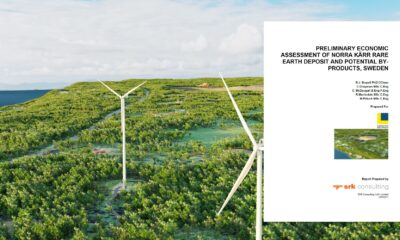
 Nyheter2 veckor sedan
Nyheter2 veckor sedanLeading Edge Materials är på rätt plats i rätt tid
-

 Nyheter3 veckor sedan
Nyheter3 veckor sedanNytt prisrekord, guld stiger över 4000 USD
-

 Nyheter4 veckor sedan
Nyheter4 veckor sedanEtt samtal om guld, olja, koppar och stål
-

 Analys4 veckor sedan
Analys4 veckor sedanOPEC+ will likely unwind 500 kb/d of voluntary quotas in October. But a full unwind of 1.5 mb/d in one go could be in the cards
-
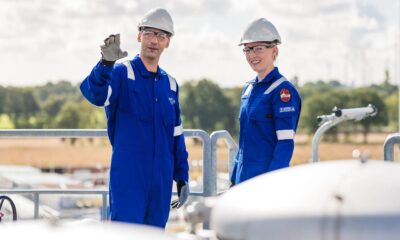
 Nyheter4 veckor sedan
Nyheter4 veckor sedanNeptune Energy bekräftar enorma litiumfyndigheter i Tyskland




